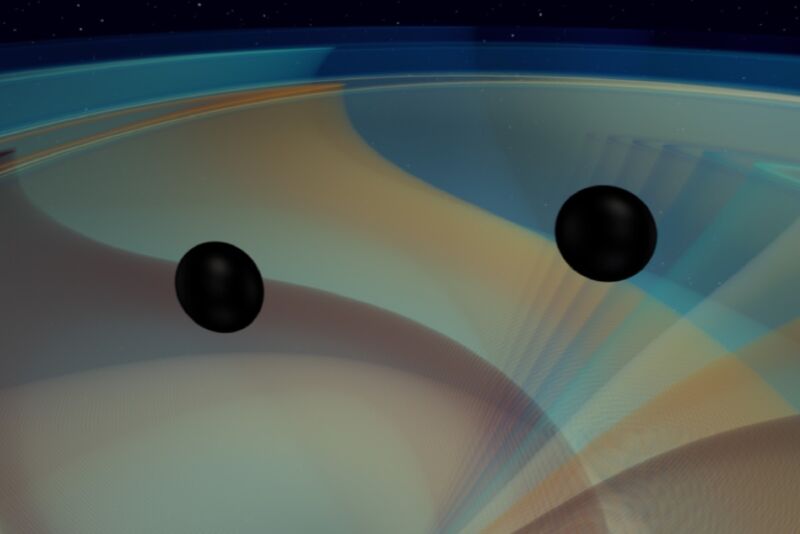Black hole mergers may emit double chips, giving us clues about their shape
Ars Technica » Scientific Method 2020-10-08

Enlarge / Artist's illustration of a black hole merger. New simulations suggest that colliding black holes should emit not one, but multiple telltale "chirps," when the collision is observed from the "equator" of the final black hole. (credit: N. Fischer, H. Pfeiffer, A. Buonanno, SXS Collaboration)
Physicists hunt for merging black holes and other similar cosmic events through the detection of gravitational waves, from which they can glean valuable information, such as the mass of both the precursor black holes and the final, larger black hole that results from the merger. Now a team of scientists has found evidence from supercomputer simulations that those waves may also encode the shape of merging black holes as they settle into their final form, according to a new paper published in the Nature journal Communications Physics.
General relativity predicts that two merging black holes should give off powerful gravitational waves—ripples in the fabric of spacetime so faint, they are very difficult to detect. The waveforms of those signals serve as an audio fingerprint of the two black holes spiraling inward toward each other and merging in a massive collision event, sending powerful shock waves across spacetime. Physicists look for a telltale "chirp" pattern in the data as the two black holes collide. The new remnant black hole vibrates from the force of that impact, and those vibrations—called a "ringdown" since it is much like the sound of a bell being struck—also produce gravitational waves. Furthermore, the gravitational-wave signals have multiple frequencies, dubbed "overtones," that fade away at different rates (decay), with each tone corresponding to a vibrational frequency of the new black hole.
LIGO detects these gravitational waves via laser interferometry, using high-powered lasers to measure tiny changes in the distance between two objects positioned kilometers apart. (LIGO has detectors in Hanford, Washington, and in Livingston, Louisiana, while a third detector in Italy, Advanced VIRGO, came online in 2016.) On September 14, 2015, at 5:51am EDT, both detectors picked up signals within milliseconds of each other for the very first time.